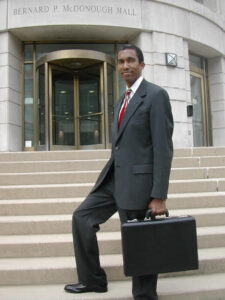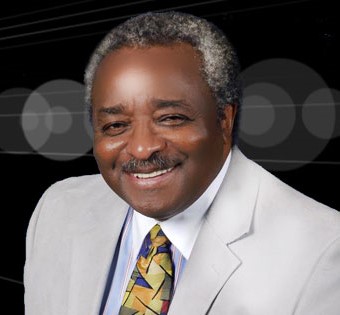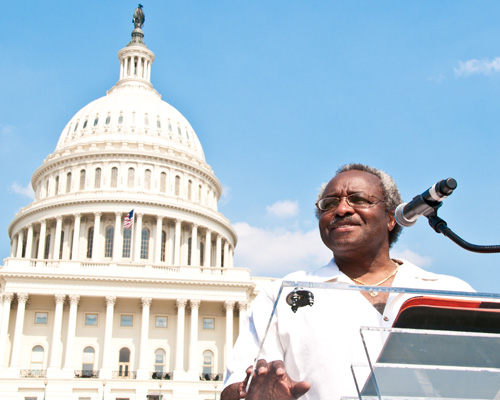THE AFFIRMATIVE ACTION DECISION – THE FIRST IN A THREE PART SERIES
Attorney Bradley Thomas has penned a scholarly commentary on the Supreme Court's Affirmative Action Decision. But, this practicing lawyer goes further and presents not just the academic considerations to be weighed in this discussion, but he also presents very practical thinking that only a hands-on, court experienced lawyer can provide. This is Part One of a Three Part Series.
________________________
So SCOTUS Struck Down Affirmative Action in Higher Education
(Now Where Do We Go From Here?)
© 2023 - Bradley A. Thomas
In a pair of decisions handed down by the United States Supreme Court on Thursday, June 29, 2023, Students for Fair Admissions, Inc. v. President and Fellows of Harvard College and Students for Fair Admissions, Inc. v. University of North Carolina, the high court struck down and declared unconstitutional the race-conscious admissions programs of both schools. The Court found that Harvard and UNC's admissions programs violate the equal protection clause of the Fourteenth Amendment and that the universities’ “ends” of improving diversity on their campuses do not justify their “means” of using race as a factor in admissions. These decisions, by votes of 6-3 in the UNC case and 6-2 in the Harvard case (Justice Ketanji Brown Jackson didn’t participate in the Harvard case because of her affiliation with the university) reverse a decades-long policy of colleges and universities using race as one of many factors which can be considered in making the determination of which student admission applications are approved and which are not.
The sudden impact of the Students for Fair Admissions decisions has sent shock waves through our society and sent our various institutions and organizations scurrying to respond and to develop counter-strategies. Respond we should, but let me dare suggest that the Supreme Court decisions of June 29th have provided us with a great opportunity for progress. Napoleon Hill, in his classic treatise Think and Grow Rich, wrote that “[e]very adversity, every failure, every heartache carries with it the seed of an equal or greater benefit.” Albert Einstein, arguably one of the greatest thinkers of the last century said this: “In the middle of every difficulty lies opportunity.” And of course, our own Dr. Willie Jolley put it this way: “A setback is a setup for a comeback!” What am I getting at? We now have the opportunity to use the Supreme Court’s rulings in the Harvard and UNC cases, and some of the other decisions recently handed down by the high court, like the striking down of President Biden’s student loan forgiveness program, to wake the sleeping giant and galvanize voters to reverse the trends that have lead to the ultra-conservative takeover of the federal courts and many state legislatures across the country. We saw that happen to a significant degree just last year as the Dobbs v. Jackson Women’s Health Organization ruling, where the Court reversed the 49 year precedent of Roe v. Wade, galvanized pro-choice voters and was likely a major factor in Democrats taking back the Senate in 2022.
We have to take a long-game approach and commit to becoming more proactive and less reactive. My friend and radio personality Joe Madison likes to say that there is a difference between a moment and a movement. Quoting the Black Eagle, “a movement requires sacrifice.” I don’t have a problem with the other strategies being considered, the creation of a financing entity, the building of a college-based Advanced Legal Studies curriculum and the development of a media and social media/hands-on outreach approach. But I don’t want us to sleep on this golden opportunity to harness the political forces we can use to undergird our efforts in all of these other endeavors. Think back to the Greenwood District of Tulsa, Oklahoma, in 1921. That community was so economically successful it was known as “Black Wall Street.” Yet on June 1 of that year, over a period of just 18 hours, 35 city blocks were burned to the ground, up to 300 people were massacred and churches, schools, businesses, a hospital, a library and more than 1,200 homes were destroyed. Political officials, local, state and reportedly even federal officials, either participated or, at a minimum, acquiesced in the attack. While we can’t compare 1921 to 2023, one can’t help but wonder if the fate of Black Wall Street might have been different if its residents had a little more political clout to undergird their financial footing.
I must confess that I threw in the Black Wall Street reference to get your attention. Now that I have it, let me say that I really do think we may be facing the best opportunity for lasting chance in almost 60 years. You may not realize it but the Supreme Court’s Student’s for Fair Admissions decisions were handed down 59 years to the day after the U.S. Senate broke an 83-day filibuster and passed the Civil Rights Act of 1964. Many of us thought that after the passage of the Civil Rights Act of 1964 and the Voting Rights Act of 1965 a year later, that the American Civil War was finally over. Jim Crow was dead. Liberty and justice for all was finally a reality. But as soon as those momentous pieces of legislature were enacted into law, the other side got busy. Jim Crow put on a suit and tie and became James Crow, Esquire.
First, there was the “restore law and order” for “the silent majority” presidential campaign of Richard Nixon in 1968. It played on the fears of white Americans that their peaceful way of life was being threatened by the lawless rioters they saw on their TV screens. Many of us sat that one out and Nixon was elected. Nixon then appointed conservative judge Warren E. Burger to replace Earl Warren, the Chief Justice who had presided over the unanimous 1954 Brown v. Board of Education decision. Nixon also appointed three other conservatives as Justices of the Supreme Court, Harry Blackmun who wound up becoming a strong liberal, Lewis F. Powell who became a moderate swing vote on the Court, and William Rehnquist who later became Chief Justice and helped push the Court to the right.
Then came the “Let’s Make America Great Again” campaign of Ronald Reagan in 1980. (Yes, that’s right, it was Reagan, not Trump, who came up with that one.) Many of us sat that one out as well and Reagan became our 40th President. Reagan elevated William Rehnquist from Associate Justice to Chief Justice, appointed another conservative jurist, Sandra Day O'Connor, to be first woman to serve on the Supreme Court and, finally, appointed Antonin Scalia, who then became the most conservative justice on the Supreme Court at the time. (The most conservative current member of the Court today, Justice Clarence Thomas, was appointed to the bench by Reagan’s successor, George H.W. Bush, who rode into office on Reagan’s coat tails.)
Fast forward to the mid-term elections of 2014. Many of us sat that one out too, allowing the Republicans to seize control of the Senate. That is significant because it was the Republican controlled Senate which, in 2016, refused to give President Obama’s choice to succeed Justice Scalia, Merrick Garland, so much as a hearing before the Judiciary Committee, much less a vote on the floor of the Senate. Instead, they left the seat open to be filed by Obama’s successor, Donald Trump. Later in the 2016 general election, when we didn’t come out in sufficient numbers in certain key states, particularly in the South and the Mid-West, Trump was elected president. Trump, in just four years in office, managed to appoint three conservative judges to the Supreme Court, Neil Gorsuch, who took the seat that should rightfully have been filed by Obama’s nominee Garland, Brett Kavanaugh, who replaced the retiring Anthony Kennedy, a conservative who sometimes sided 2 with his liberal colleagues, and Amy Coney Barrett, who the Republican-controlled Senate rushed through the confirmation process to replace the recently deceased Ruth Bader Ginsburg at the very end of Trump’s term in office.... (read more)







